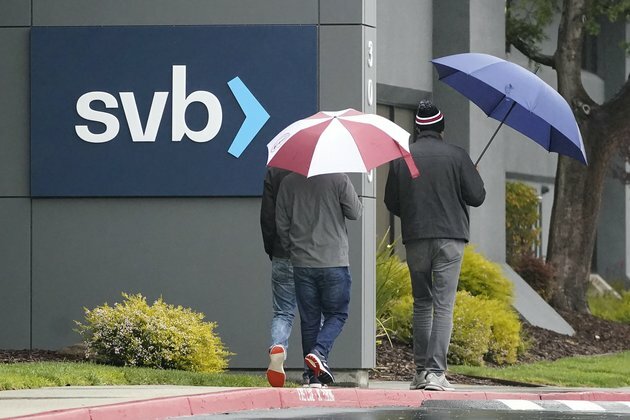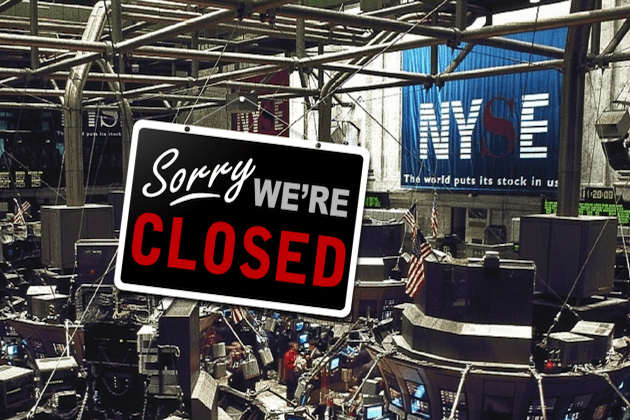What Canada can learn from the collapse of Silicon Valley Bank
The Conversation
18 Mar 2023, 02:08 GMT+10

The sudden collapse of Silicon Valley Bank left its investors reeling, shocked and unsure of what had happened to their funds. SVB was one of the top 20 banks in the United States, and many had trusted their money with the bank, unaware of the crisis that was brewing.
The U.S. Federal Deposit Insurance Corporation (FDIC) intervened to guarantee all deposits to customers, even those above the $250,000 limit. Silicon Valley Bank's failure was technically due to a liquidity crisis - a lack of sufficient cash inflows to sustain it during a period of significant cash outflows.
However, its downfall was also a culmination of several factors such as poor risk management, materialized interest rate risk, inadequate regulation and the aforementioned liquidity issues.
The collapse of a medium-sized financial institution like Silicon Valley Bank serves as a reminder of the importance of robust risk management, sound regulatory oversight and effective liquidity management to prevent such incidents from happening in the future.
What happened exactly?
Silicon Valley Bank serves numerous technology startups and venture capital firms. Its annual report, released two weeks ago, revealed a significant surge in client deposits during the pandemic. According to the report, the bank's deposits tripled to $173 billion in 2022 from $60 billion in 2019.
When Silicon Valley Bank took in these deposits, the funds didn't just sit in the bank's account. The bank invested them, as all banks do, in various financial products to generate additional profits.
One of the investment vehicles Silicon Valley Bank used was held-to-maturity securities (43 per cent of total assets), which are mostly bonds that pay a fixed coupon regularly. These securities are considered low risk, as they are unlikely to default, but they can be problematic if the bank suddenly needs to sell them for cash.
Interest rates rose consistently in 2022, which caused bond values to fall significantly. Up until the end of 2022, Silicon Valley Bank had an unrealized loss of $15 billion generated from its held-to-maturity products.
Silicon Valley Bank was forced to sell the debt instruments at a loss, leading to the sudden liquidity crisis. This loss was then made public, as the bank sought to increase its capital by selling stock.
When customers - many with large and poorly diversified balances - realized there was a significant difference between their balance sheets and deposits, they tried to withdraw their funds from the bank in a short period, causing a bank run.
How bad was the bank run?
Silicon Valley Bank's total liability at the time of the bank run was $195 billion, $173 billion of which were deposit liabilities.
On the day of the bank run, the bank's customers attempted to withdraw $42 billion in cash - nearly 20 per cent of the bank's total assets. However, Silicon Valley Bank didn't have sufficient cash and available-for-sale securities to pay the deposit liabilities.
In the end, Silicon Valley Bank ran out of all available cash to pay its depositors, leaving the bank with a $1 billion negative balance, according to a regulatory filing by the company.
As a result of the bank run, regulators had to intervene and take control of the bank. This was done to prevent further damage to the financial system and to protect the interests of the bank's depositors.
The situation at Silicon Valley Bank serves as a cautionary tale for banks and investors alike, highlighting the importance of risk management and the potential dangers of wrongful asset liability management.
Lessons learned from SVB's failure
In the short term, the greatest risk lies in something called financial contagion. This refers to a situation where investors lose confidence not only in the bank that failed, but also in other banks, leading to them withdrawing their deposits and triggering bank runs across the industry.
This contagion risk can affect not only investors in the U.S., but also those in Canada. If contagion occurs, it could destabilize the markets for some time until the situation is resolved.
Fortunately, the U.S. Federal Reserve has provided a liquidity account for all banks feeling the pinch; this has been enough to stop bank runs in the past.
In Canada, the Office of the Superintendent of Financial Institutions took permanent control of Silicon Valley Bank's Canadian assets to protect creditors, but since the bank does not have a banking licence, this is more of a market-calming measure rather than any specific local liquidity concerns. Also, while smaller banks have special regulations concerning liquidity, the OSFI has the authority to change these rules and require more capital or liquidity whenever necessary.
Are current regulations good enough?
One question that remains is whether the current U.S. banking regulations are fit for their purpose. Two separate issues can be considered here.
The first is that small and medium-sized institutions have a different set of laxer rules they play under, compared to larger institutions. The ethos of this ruleset is that smaller banks are regional and likely won't cause systemic risk if they fail. Silicon Valley Bank and other bank failures suggest otherwise. The Federal Reserve is now considering changing these rules.
The second question is whether the rules themselves moderate risks, particularly interest rate risk. So far, the regulations don't prescribe how much interest rate risk hedging an institution must undertake. This has been clearly insufficient in the face of rapidly rising interest rates and inflation. Silicon Valley Bank was particularly guilty of poor hedging, but the regulations were not there to account for this, nor are they there to stop downward spirals in other banks.
The failure of medium-sized banks will most likely not lead to a major crisis, but it should serve as a wake-up call to regulators and to the markets of the risks that occur when central banks are taking measures to keep inflation in check.
Regulators and central banks need to take a close look at the current rules to see if they are fit for their purpose and create new frameworks where they detect they are not sufficient.
Authors: Yuhao Zhou - PhD Candidate in Financial Modelling, Western University | CristiУТЁn Bravo - Associate Professor and Canada Research Chair in Banking and Insurance Analytics, Western University 
 Share
Share
 Tweet
Tweet
 Share
Share
 Flip
Flip
 Email
Email
Watch latest videos
Subscribe and Follow
Get a daily dose of San Jose Sun news through our daily email, its complimentary and keeps you fully up to date with world and business news as well.
News RELEASES
Publish news of your business, community or sports group, personnel appointments, major event and more by submitting a news release to San Jose Sun.
More InformationUS Sports
SectionTwins secure comeback win over Rays on walk-off bunt
(Photo credit: Bruce Kluckhohn-Imagn Images) Brooks Lee hit a walk-off squeeze bunt to score Byron Buxton from third base and delivered...
Eighth inning turns tide for Cardinals in win over Cubs
(Photo credit: Patrick Gorski-Imagn Images) Yohel Pozo hit a pinch three-run homer to lift the visiting St. Louis Cardinals past...
Elks search for their first win of the season against Redblacks
(Photo credit: Anne-Marie Sorvin-Imagn Images) Since COVID-19 canceled the 2020 CFL season, the Edmonton Elks have tried multiple...
Dodgers recall RHP Jack Little, option RHP Noah Davis
(Photo credit: Jayne Kamin-Oncea-Imagn Images) The Los Angeles Dodgers recalled right-hander Jack Little and optioned right-hander...
Report: Rockets trade F Cam Whitmore to Wizards
(Photo credit: Geoff Burke-Imagn Images) The Houston Rockets are trading forward Cam Whitmore to the Washington Wizards for two second-round...
Blue Jays place RHP Yimi Garcia (ankle) in 15-day IL
(Photo credit: Dan Hamilton-Imagn Images) The Toronto Blue Jays placed right-hander Yimi Garcia on the 15-day injured list with a...
Business
SectionEngine defect prompts Nissan to recall over 443,000 vehicles
FRANKLIN, Tennessee: Hundreds of thousands of Nissan and Infiniti vehicles are being recalled across the United States due to a potential...
Microsoft trims jobs to manage soaring AI infrastructure costs
REDMOND, Washington: Microsoft is the latest tech giant to announce significant job cuts, as the financial strain of building next-generation...
Stocks worldwide struggle to make ground Friday with Wall Street closed
LONDON UK - U.S. stock markets were closed on Friday for Independence Day. Global Forex Markets Wrap Up Friday with Greeback Comeback...
Nvidia briefly tops Apple’s record in AI-fueled stock rally
SANTA CLARA, California: Nvidia came within a whisker of making financial history on July 3, briefly surpassing Apple's all-time market...
ICE raids leave crops rotting in California, farmers fear collapse
SACRAMENTO, California: California's multibillion-dollar farms are facing a growing crisis—not from drought or pests, but from a sudden...
Trump signals progress on India Trade, criticizes Japan stance
WASHINGTON, D.C.: President Donald Trump says the United States could soon reach a trade deal with India. He believes this deal would...













